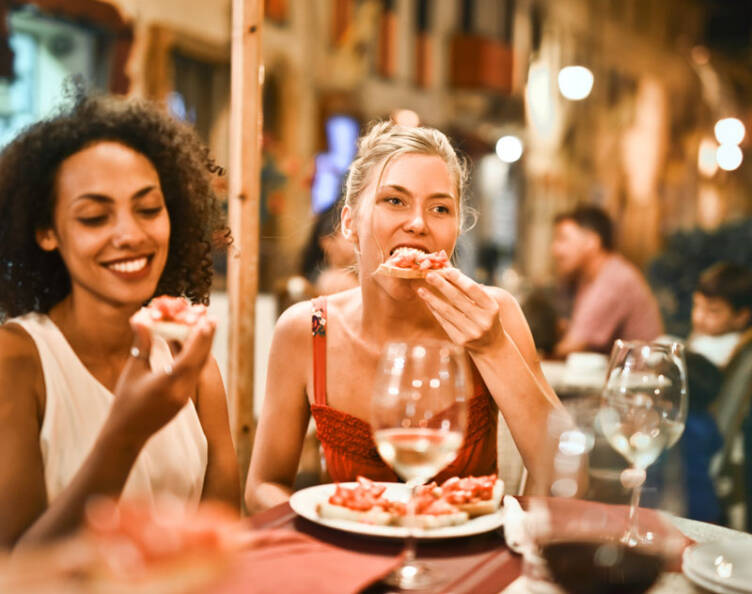
Food and Science
It’s clear the Culinary Code goes a little ways beyond putting a farmhouse burger on a cutting board. Salomon hopes to carefully compose every dish to create a sense of harmony that resonates with the target audience. Using the Culinary Code, they can make a summer greens salad appeal to the most fervent carnivore. It’s clear that neuroscience might have more to offer to the food industry than one would expect.
Does the knife look weird in this picture? That’s because everything else has been coded differently. The simple wine glass, the rustic wooden table, the roasted vine tomatoes, the wooden chair and soft lighting all seem to suggest this dish belongs in Comfort. Except for the skewered burger with the knife, which implies Domination. The result is a dish in discord.
- Modern, uncommon or exotic materials.
- Mix of materials
Bright, saturated and expressive colors
Color blocks
- Possibly asymmetry
- Individual, ‘homemade’ shapes
- Curved, free, and innovative shapes
Creative, imaginative, and somewhat extravagant designs
Unusual or strange elements, like exotic patterns
Combining differing styles
Common designs framed in a modern way, like a handmade, imperfect look that’s surprising.
Materials
Color
Shape
Design

Example: tableware
What does the Culinary Code actually look like on a plate? Let’s look at the how Salomon categorizes tableware according to the Culinary Code. To help you, Inspiration is coded in Orange, Domination in Red, and Comfort in Green
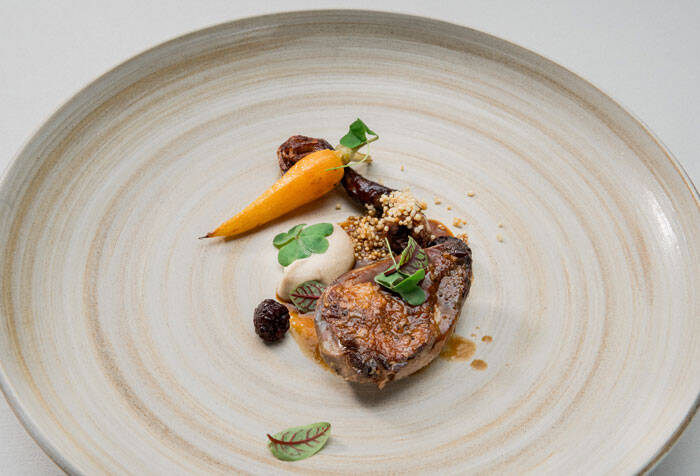
Inspiration, Domination, Comfort
The Culinary Code categorizes three main emotional areas that you can speak to with the right presentation of your dishes: Inspiration, Domination, and Comfort. But people aren’t that simple, there’s an entire spectrum in between these areas. Still, you can generalize a little. A dish hitting the sweet spot between inspiration and domination evokes adventure and sensation. Between domination and comfort you find discipline and control, and between comfort and inspiration you find imagination and pleasure. These terms are vague, because they’re describing something that mostly happens subconsciously. However, because most of these emotions happen subconsciously in a split second, it’s very easy to tell if you’ve gotten it right or wrong.
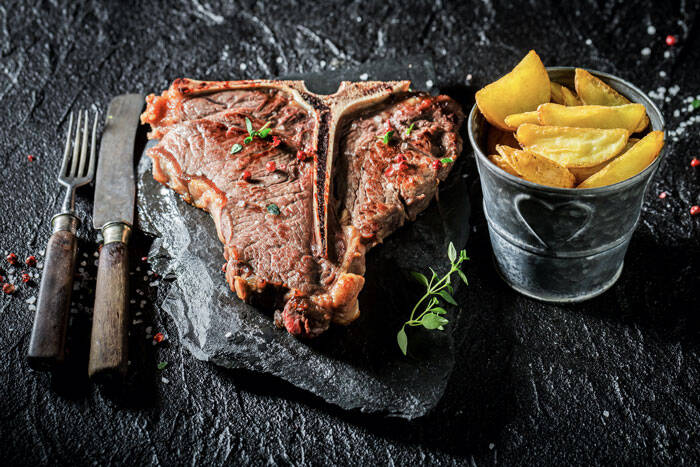
The Limbic System
The Culinary Code is based on neuroscience, and speaks to specifically the limbic system in our brain. The limbic system is responsible for lower order emotional processing, learning, and memory. If you’ve ever looked at a dish that made your mouth water, and made you instantly want to eat it, that’s the limbic system at work. Whenever we make spontaneous emotional decisions we’re relying on this part of our brain. More often than not, you won’t even know you’re making them, and that’s exactly why they’re so important.
Was this dish ordered by a man or a woman? What makes you have that association?

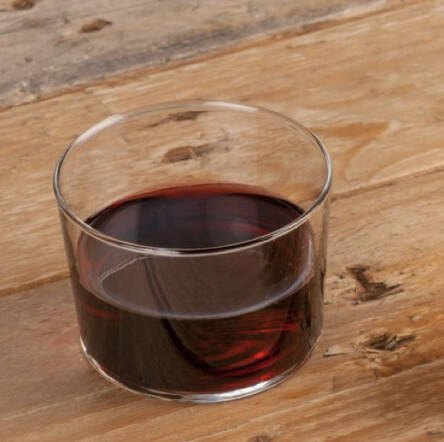
Which is the more expensive glass? Can you think of why?
What is the Culinary Code?
In essence, the Culinary Code takes into account every element that goes into making up a dish, from the dish itself, to the plating, the design, shapes, colors, materials, and every other detail that is often skipped over. Why? Because all those elements invoke an emotional response. A subtle one, to be sure, one you won’t even know you’re making. But those split-second associations can play a critical role in making food choices. If you can map each element of a dish to a specific emotion, you can create an unmatched sense of harmony on a plate, and guide your guests’ choices in a way you never realized you could.

Food is more than flavor. Especially in a foodservice setting guests are there for more than a good meal. Food is an experience. It’s emotion. To create a memorable experience you need to take into account all these nebulous and intensely personal things. But how do you do that? The people at Salomon FoodWorld developed a Culinary Code that aims to do exactly that. They hope to pair the right feeling, with the right food.
Jelle Steenbergen Xiao Er Kong
Pairing the feeling with food
A look at the Culinary Code
trendwatch
4 min
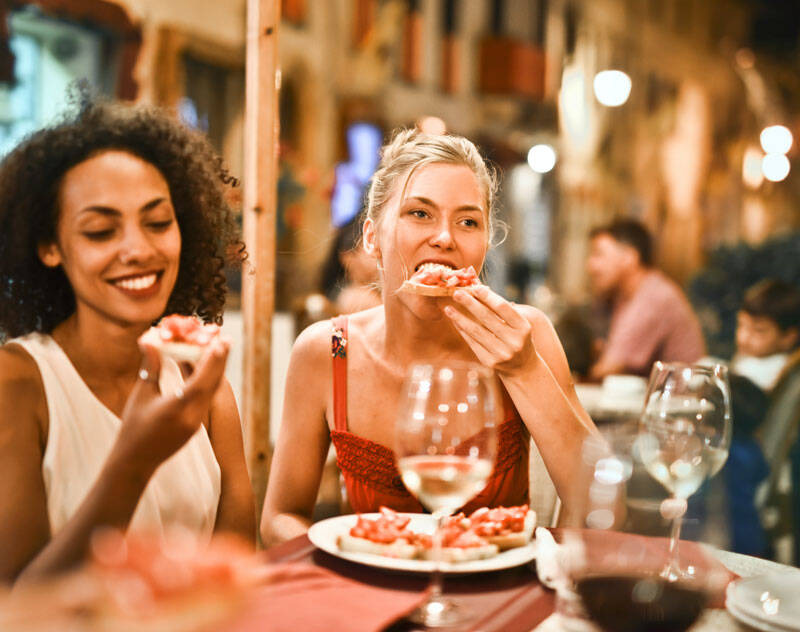

Food and Science
It’s clear the Culinary Code goes a little ways beyond putting a farmhouse burger on a cutting board. Salomon hopes to carefully compose every dish to create a sense of harmony that resonates with the target audience. Using the Culinary Code, they can make a summer greens salad appeal to the most fervent carnivore. It’s clear that neuroscience might have more to offer to the food industry than one would expect.
Does the knife look weird in this picture? That’s because everything else has been coded differently. The simple wine glass, the rustic wooden table, the roasted vine tomatoes, the wooden chair and soft lighting all seem to suggest this dish belongs in Comfort. Except for the skewered burger with the knife, which implies Domination. The result is a dish in discord.
Natural materials like wood
Sturdy, durable materials that exude quality
- Subtle, muted shades you could find in nature
- Earthy, warm colors
- Low saturation
- No trending colors
Soft, organic and well-known shapes
Symmetry
Harmonious transitions, rounded corners
- Classic, discrete, and ‘ordinary’ designs
- Rustic, low contrast
- Delicate ornaments
- Naturalistic and nostalgic elements
- Handpainted look
Materials
Color
Shape
Design

- High quality and expensive materials (marble, crystal, bone)
- Heavy and cold materials like steel or granite
Refined with gold or silver elements
Contrast can work
Accent in black, red, antracite or carbon
High saturation and low brightness. Opulent instead of colorful
- Angular, pointy
- Symmetrical
- Clear, precise lines and structure
Beautiful, stylish, and exclusive designs
Modern or classic layouts, framed to an exceptional standard
Unconventional
Materials
Color
Shape
Design

- Modern, uncommon or exotic materials.
- Mix of materials
Bright, saturated and expressive colors
Color blocks
- Possibly asymmetry
- Individual, ‘homemade’ shapes
- Curved, free, and innovative shapes
Creative, imaginative, and somewhat extravagant designs
Unusual or strange elements, like exotic patterns
Combining differing styles
Common designs framed in a modern way, like a handmade, imperfect look that’s surprising.
Materials
Color
Shape
Design

Example: tableware
What does the Culinary Code actually look like on a plate? Let’s look at the how Salomon categorizes tableware according to the Culinary Code. To help you, Inspiration is coded in Orange, Domination in Red, and Comfort in Green
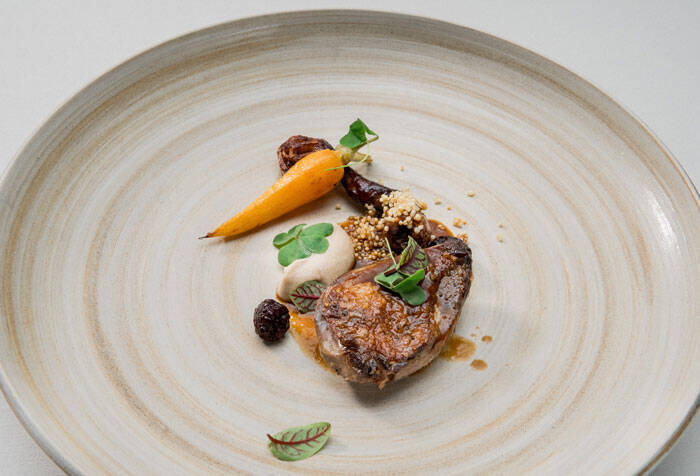
Inspiration, Domination, Comfort
The Culinary Code categorizes three main emotional areas that you can speak to with the right presentation of your dishes: Inspiration, Domination, and Comfort. But people aren’t that simple, there’s an entire spectrum in between these areas. Still, you can generalize a little. A dish hitting the sweet spot between inspiration and domination evokes adventure and sensation. Between domination and comfort you find discipline and control, and between comfort and inspiration you find imagination and pleasure. These terms are vague, because they’re describing something that mostly happens subconsciously. However, because most of these emotions happen subconsciously in a split second, it’s very easy to tell if you’ve gotten it right or wrong.

The Limbic System
The Culinary Code is based on neuroscience, and speaks to specifically the limbic system in our brain. The limbic system is responsible for lower order emotional processing, learning, and memory. If you’ve ever looked at a dish that made your mouth water, and made you instantly want to eat it, that’s the limbic system at work. Whenever we make spontaneous emotional decisions we’re relying on this part of our brain. More often than not, you won’t even know you’re making them, and that’s exactly why they’re so important.
Was this dish ordered by a man or a woman? What makes you have that association?
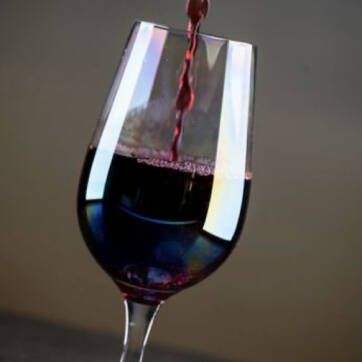
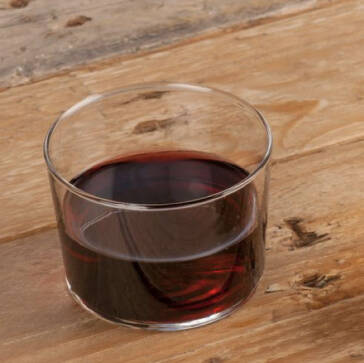
Which is the more expensive glass? Can you think of why?
What is the Culinary Code?
In essence, the Culinary Code takes into account every element that goes into making up a dish, from the dish itself, to the plating, the design, shapes, colors, materials, and every other detail that is often skipped over. Why? Because all those elements invoke an emotional response. A subtle one, to be sure, one you won’t even know you’re making. But those split-second associations can play a critical role in making food choices. If you can map each element of a dish to a specific emotion, you can create an unmatched sense of harmony on a plate, and guide your guests’ choices in a way you never realized you could.
Food is more than flavor. Especially in a foodservice setting guests are there for more than a good meal. Food is an experience. It’s emotion. To create a memorable experience you need to take into account all these nebulous and intensely personal things. But how do you do that? The people at Salomon FoodWorld developed a Culinary Code that aims to do exactly that. They hope to pair the right feeling, with the right food.
Jelle Steenbergen Xiao Er Kong
Pairing the feeling with food
A look at the Culinary Code
4 min
